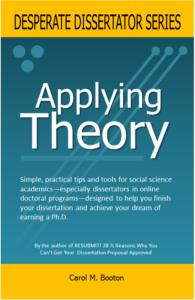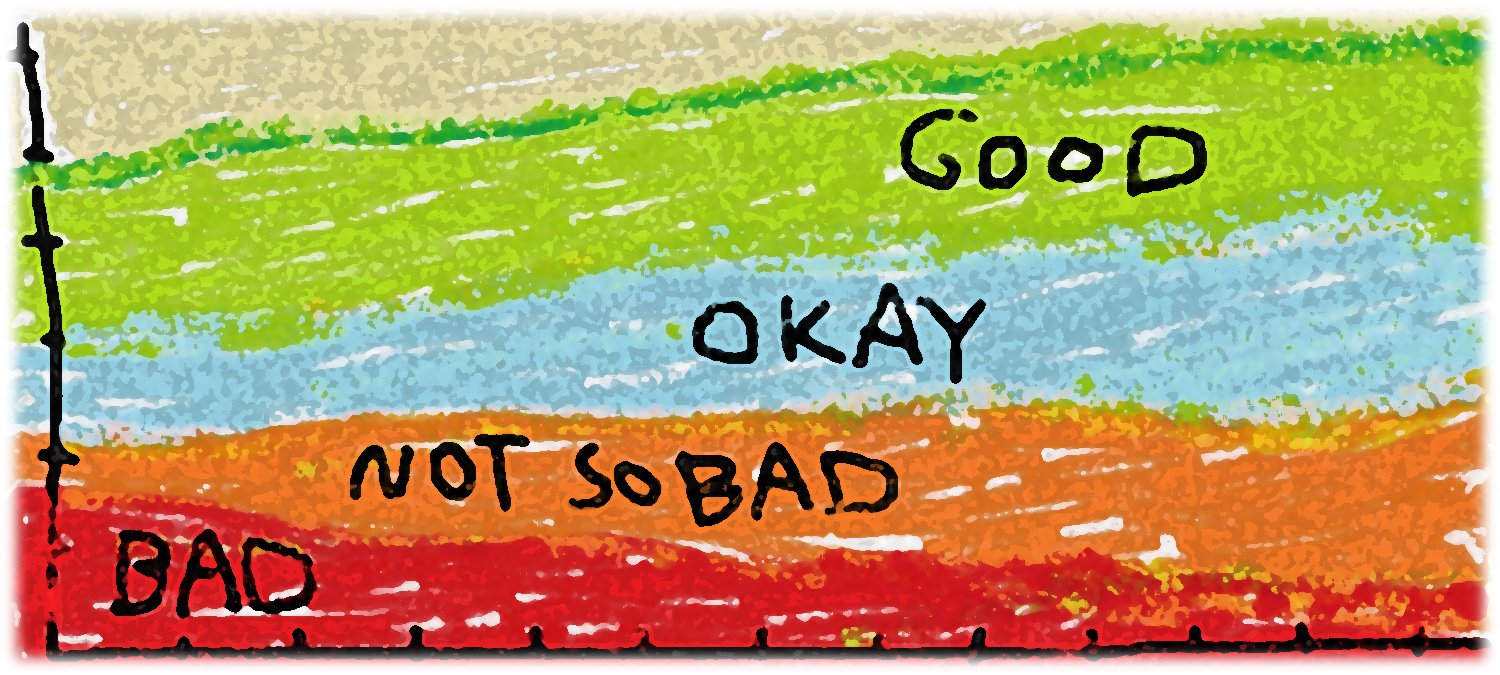If we plan to earn a doctoral degree, we usually need to write a dissertation as part of the requirements. A dissertation is a report of large research project we implement with the approval of our dissertation chairperson and committee. Before we can begin collecting data for our project, we must write a proposal in which we describe our plan to complete our project. In the social sciences, such proposals often have three chapters.
In Chapter 1, we state the problem we propose to study, explain the background and purpose of our project, and list the questions we hope to answer with our findings. In Chapter 2, we review what other scholars have studied and try to show the gap in knowledge we hope to fill with our study. In Chapter 3, we describe our plan for accomplishing our study—this is the methods chapter.
What sections are in a methods chapter?
The methods chapter is our research plan, in which we describe in detail how we intend to carry out our project. The methods chapter of a social sciences dissertation follows a predictable format. For example, the for-profit institution I attended required the following sections (no more and no less):
- Introduction (in this section, we briefly restate the problem, purpose, and research questions and offer an overview of the chapter)
- Research design (what methodology have we chosen: quantitative, qualitative, or both—and why?)
- Population and sample (who or what are we studying? How many are we going to study?)
- Materials and instrumentation (what questions, what surveys, what protocols, what experimental equipment are we going to use to study our sample?)
- Operational definitions of variables (usually for quantitative studies only, what variables are we trying to assess and how are we defining them so we can measure them?)
- Procedures (what exactly are we going to do? This is an overview of the entire research plan)
- Data collection and analysis (specifically, how will we collect and analyze data?)
- Assumptions (what are we assuming is true about the topic, population, and research plan?)
- Limitations (what could keep us from being entirely certain that we’ve measured what we planned to measure?)
- Delimitations (what parameters have we set to define the scope of our study?)
- Ethical assurances (what is our plan for protecting our research subjects and their data? How will keep our own preconceptions and biases from interfering with our conclusions?)
- Summary (what were the main points of the chapter?)
Why is the methods chapter important?
The methods chapter is the blueprint for our study. The methods chapter should provide enough detail that another researcher could replicate the study to validate our findings. A major reason why chairs and committees reject dissertation proposals is because the methods chapter fails to provide sufficient detail.
Why should we review methods chapters in other dissertations?
Two reasons: We will learn what works, and we will learn how to improve our methods chapters so we are more likely to earn approval.
For some examples, locate some dissertations recently published in your field that use methods you are considering for your own project. Dissertators often disclose what methods they used in the titles of their dissertations. Keywords include quantitative, qualitative, phenomenological, case study, experiment, ethnographic, and narrative.
If you attend a for-profit university, select some dissertations from your institution as well as some from other for-profits and nonprofits (both public and private) so you can discern differences between documents. If you attend a public or private nonprofit university, select some dissertations from institutions comparable to your own (excluding for-profit universities). After you have read ten or so dissertations on topics similar to yours, using methods similar to yours, you will have a sense of how the elements should appear in the methods chapter.
How do we critically review a methods chapter?
Before you start, create a matrix or spreadsheet to help you keep track as you review the documents. You can assign points or grades as you go through the following checklist. Your subjective ability to evaluate the quality of each methods chapter will evolve and sharpen as you read more dissertations.
In fact, it may please you to see how many dissertators failed to follow the university template. (Don’t you do that, at least not for your proposal). You will see, the hoop we have to jump through is bigger than we might think!
Remember, we are reviewing published dissertations. Can you tell how much of the discussion was from the proposal? (Hint: Watch for future tense when it should be past tense—for example, “The research design selected for this study will be qualitative phenomenology.” Be aware, when it’s your turn: It’s easy to forget to revise future tense to past tense, and editors don’t always catch this problem.)
First, find the document’s table of contents and look for the methodology/methods chapter. It may be entitled Research Design and Methodology. It might be called simply Methods. It often is the third chapter of a proposal but depending on the institution and the field of study, it could be another chapter.
Next, for each section of the methods chapter, follow these steps:
- Introduction. Did the dissertator briefly restate the problem and purpose, present the research questions, and preview the sections in the chapter? Many authors exclude this important information. It might seem repetitive, but orienting readers at the start of the chapter can help them follow along as we present our argument.
- Research design. The research design sets the stage for the details of the research plan. First, was a discussion of research design present? (If not, whoopsie.) If you find it, or something similarly named, read that section critically, considering the following questions:
- How much of the discussion was culled from Creswell and the like? We want some detail about the nature of the research design, but not too much. We want to avoid sounding like a textbook discussion of research design. In our proposals, we should briefly mention what the experts recommend and then explain what we plan to do and why.
- Along those lines, how long did it take the dissertator to get around to actually identifying and describing his or her research design? Did you get the feeling there were more words than there needed to be about irrelevant topics? (Were you bored and losing interest within a couple paragraphs?)
- Did the dissertator clearly explain why that design was selected? That is, did he or she justify the choice clearly? When I say clearly, I mean explicitly: “I chose this design because…” Readers appreciate clarity. Don’t make them search for clues!
- Population and sample. This section covers details about the population from which the sample was drawn and shows how the sample was selected. Consider these questions:
- How many paragraphs did it take the dissertator to state what he or she actually did to find and recruit the sample? Or did it seem like the discussion was mostly about what a sampling plan is and what it means to have a sampling plan? (Rather than explaining the actual sampling plan?) Don’t waste valuable space reiterating textbook discussions. Get right in there and describe what you plan to do.
- Did the dissertator state the size and location of the overall population? Was the population explicitly defined and described in terms of all relevant characteristics?
- How big was the sample? How was the sample chosen? Did the dissertator describe the sampling process in enough detail that you could replicate this study? If not, their blueprint was inadequate.
- Materials and instrumentation. This section covers the practical tools and methods the dissertators used to implement their studies.
- For quantitative social science research projects, consider these questions:
- Did the dissertator choose an experimental design? If so, what materials or special equipment were used?
- What instruments did the dissertator use to measure the variables? Were they existing instruments (i.e., designed by someone else and used with permission), or were they designed by the dissertator (and were they validated)?
- How did respondents generate data—did they go online and access a Survey Monkey survey? Did they check boxes on a piece of paper with a pencil?
- Were the procedures clearly explained so you could replicate this study?
- For qualitative social science research projects, consider these questions:
- Did the dissertator present an interview protocol or focus group discussion guide?
- Did the dissertator use a video camera or an audio recorder?
- Did the dissertator observe behavior or analyze secondary data? What forms, tools, or special equipment were used?
- Were the procedures clearly explained so you could replicate this study?
- Operational definitions of variables. This section applies mainly to quantitative studies, although some qualitative researchers might define the constructs they sought to measure. Consider these questions:
- Were the operational definitions clear, succinct, and replicable?
- For hard-to-measure constructs (e.g., justice, leadership), were the important facets of each variable included in the definition? Did it make sense to you? Did the dissertator leave anything out?
- Was this section brief and to the point, maybe presented with a table? Was there too much discussion? Did it seem like a repeat of the instrumentation discussion?
- Data collection and analysis. Consider these questions:
- Did the dissertator write a lot about the generic type of data analysis processes one could use and not so much about the processes he or she actually did use? That is, does it read like a textbook discussion of data analysis processes?
- Are the details of the data collection process clear? We expect some overlap with other sections. Are the details consistent in all the sections? (You’d be amazed at how often dissertators write one thing in the instruments section and something else in the data collection section.)
- Is the data analysis plan clear? Could you replicate them? Do they make sense?
- For quantitative studies, did they mention the types of data they collected (nominal, ordinal, interval, or ratio?) Did they use appropriate analyses techniques? Did they omit descriptions of the validation techniques they used?
- For qualitative studies, did the dissertator describe the process he or she used to code text or images? Did the description make sense? Could you replicate the process or was it a vague claim of coding, categorizing, and magically arriving at themes?
- Assumptions, limitations, and delimitations. Consider these questions:
- Were any of these three sections missing? Most for-profit university templates require dissertators include all three sections. Many dissertations published by nonprofit institutions omit the assumptions and delimitations sections. Almost all studies I have reviewed include at least a minimal description of limitations.
- If you can find these three sections, were the discussions clear? Did they seem logical?
After you review a few methods chapters, you will start to see the rhythm and alignment of the sections. A solid methods chapter will give you just enough information, no more and no less, so that you could replicate the study yourself. The plan will seem like a logical progression toward answering the research questions (which, of course, is our goal). The actions the dissertators took will seem solid to you, even if you don’t totally understand all the techniques they applied. Their justifications for using those techniques will make sense.
Now you are ready to polish your own methods chapter. Have fun! Let me know how it goes.
=====================================
Find my latest books and resources
Applying Theory

Dissertators often struggle to choose and apply a theoretical framework to their research projects. In this helpful guide, I offer suggestions from my own experience. In addition, I reveal how other dissertators have applied theory successfully and earned their doctorates.
Written in a friendly, nonscholarly manner, I demystify the challenges of applying academic theory to a research project. You will learn that theory is nothing to fear—in fact, we all use theory all the time! With the help of this powerful little book, you will learn to master theory and achieve your dream of earning your Ph.D.
Print version $15.99
Kindle version $7.99
Coming in 2019
Aligning the Elements
In the second book of the Desperate Dissertator Series, I dig into a common problem dissertators face when preparing their proposals: aligning the elements of the dissertation. The elements of the dissertation usually include the problem statement, the purpose statement, the research questions, the theoretical framework, and the methodology and methods. Aligning these elements means ensuring they logically flow from one to the next. Lack of alignment is possibly the main reason proposals are not approved. In this book, I offer some tips to help you align the elements and show what other dissertators have done to succeed (it could be easier than you think).
Resubmit! 28 ½ Reasons Why You Can’t Get Your Dissertation Proposal Approved

This comprehensive book is the missing link for dissertators who have struggled to get their proposals approved. This indispensable book bulges with insights, suggestions, examples, diagrams, and practical tips, written especially for the online dissertator who may receive little support during the proposal process.
I present solutions to address twenty-eight potential reasons why you might be struggling to get your proposal approved. For example, you will learn how to write a clear problem statement, devise research questions and hypotheses, and align the elements of the proposal to facilitate speedy approval. I unlock the mysteries of Word and Excel to show you specifically how to use these tools for your proposals. Over 200 tables and figures show you exactly what to do. As a bonus, you will learn how to design a web-based survey and make a plan for fielding and analyzing the data. In this book, I cover it all to help you overcome obstacles and finish your dissertation.
Free templates and worksheets are available here.
Print version $29.99
Kindle version $9.99




